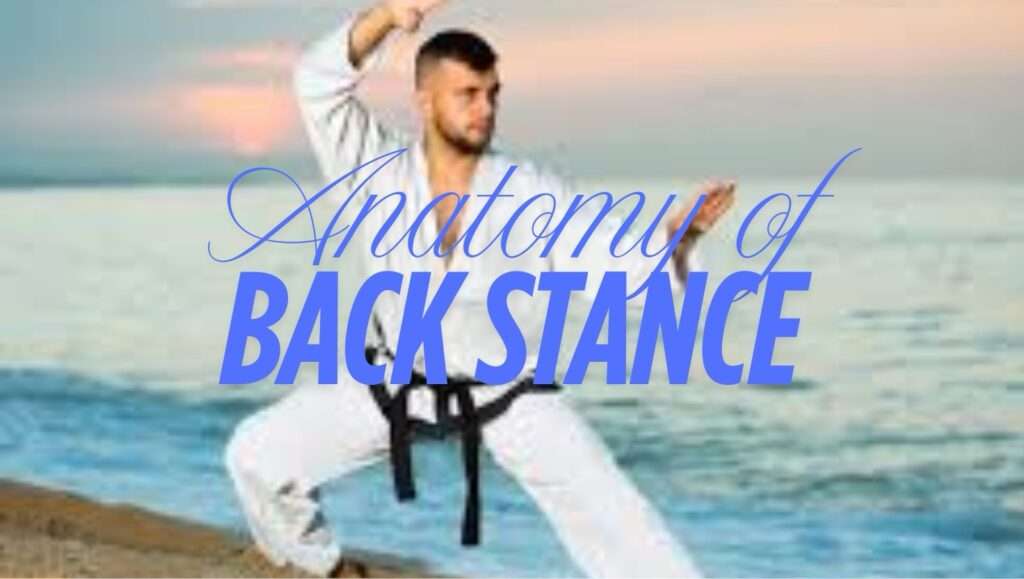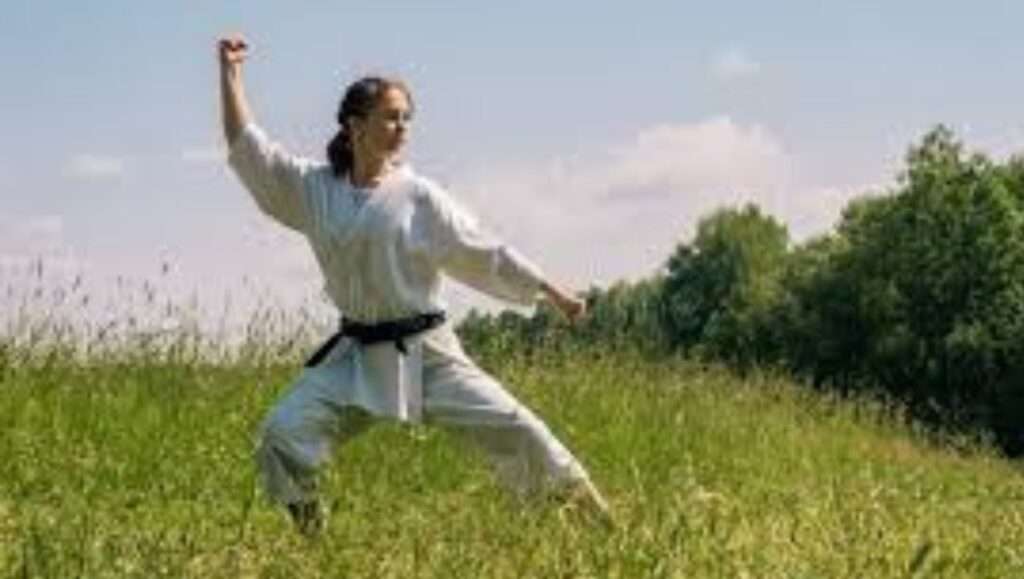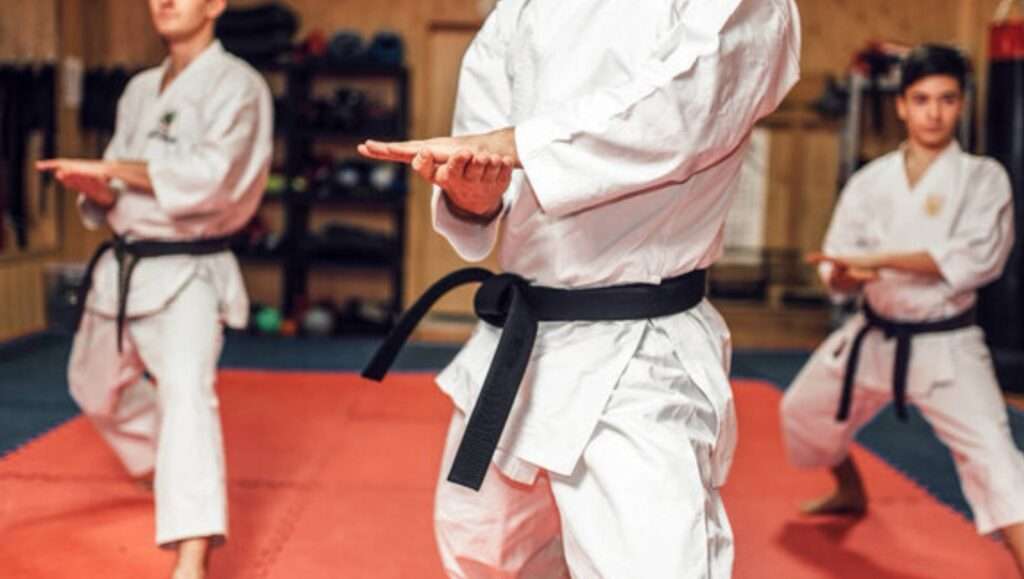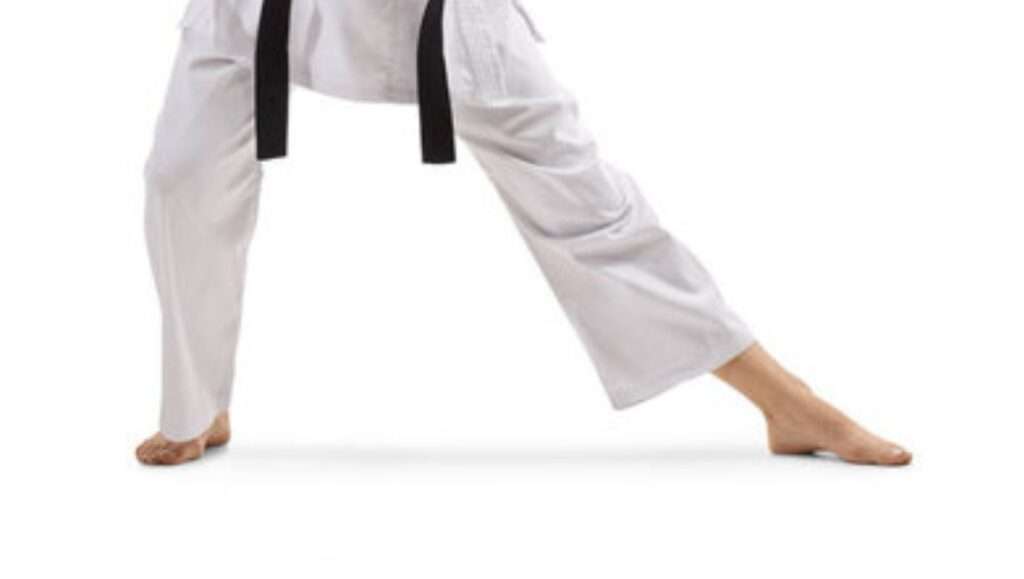Anatomy of Back Stance
Understanding the anatomy of back stance is the backbone of every martial arts movement. The back stance stands out as a core position that teaches balance, control, and defensive readiness. When done right, it helps to develop powerful lower body strength and sharpens your stability during fast exchanges.
Mastering the back stance isn’t just about looking perfect, it sets the stage for stronger technique and quicker reaction. This stance builds confidence in your footing, making it easier to defend or counter with speed. Understanding its structure and muscle demands is the first step toward cleaner, more effective motion in any martial arts system.
Key Elements of Back Stance Anatomy
Small details make a world of difference when building your back stance from the ground up. The secret to a strong back stance lies in its structure. Every part from where the heels meet the floor, to the bend of your knees and angle of the hips creates stability and power. Let’s break down each fundamental piece so you feel grounded, ready, and able to respond at a moment’s notice.

Foot Placement and Angles
Your feet set the tone for the entire stance. In most styles, the heels form a line along the stance width—roughly shoulder-width or just slightly more. Here’s something to keep in mind:
- Orientation: The front foot points forward. The back foot typically points out at about a 90-degree angle, creating an L-shape. In disciplines like karate’s kokutsu dachi, this angle helps stabilise you while you shift or pivot.
- Heel Alignment: Both heels often sit on the same straight line, which increases base stability. This acts like a wide foundation, ready to support quick shifts in direction.
- Stance Width: Width can be style-specific. For example, Shotokan karate tends to favour a wider stance than taekwondo, but both maintain a length of about one to one-and-a-half shoulder widths.
Making sure your feet are set right provides grip and balance. Without it, every step, block, or attack loses integrity and power. For a closer look at foot orientation by martial art, check out this practical guide from The International Budo Institute or see variations explained at The Martial Way’s breakdown of Kokutsu-dachi.
Weight Distribution and Balance
The hallmark of the back stance is how it handles weight. This stance often relies on the famous 70/30 rule:
- Back Leg Dominance: Approximately 70% of your weight loads onto the back leg. The front leg, slightly bent, carries about 30%. This loading primes your body for defensive maneuvers and fast pivots.
- Stability: The back leg acts like a spring, ready to absorb force or launch you forward. The front foot remains light, always prepared for a block, kick, or shift in direction.
- Balance and Readiness: This distinct distribution allows for quick direction change and shields your center line from incoming attacks, making it ideal for defensive martial arts like karate and taekwondo.
A stance with poor weight distribution risks tipping over or missing that explosive drive. Proper practice builds the leg strength and awareness needed to hold your ground. For more details on weight breakdown and stance variations, visit this explainer from Taekwondo Preschool or see Shotokan Karate’s perspective on kokutsu dachi balance.
Posture, Spine, and Upper Body Alignment
It’s tempting to focus only on the lower body, but the upper half is equally important for a healthy, stable stance.
- Vertical Spine: Keep your spine upright to allow energy to flow and prevent back strain. Imagine a string pulling your head upward, keeping your body tall without rigidity.
- Hip and Shoulder Alignment: Hips face sideways, shoulders square up, and your torso remains stacked above your hips—not twisted or leaning forward.
- Chest and Eyes Forward: Maintain your chest open and eyes focused beyond your front hand. This frame builds awareness, centers your balance, and boosts reaction speed.
Poor alignment creates weak points and leaves you open to injury. A vertical posture, much like in good standing or walking posture, keeps your centre of mass stable and reduces joint strain. Practicing these basics over time means your upper body supports your base instead of undermining it.
Each piece of the back stance puzzle e.g. feet, weight, posture. Makes it harder to push you off balance and more ready for whatever comes next.
Muscles and Mechanics Involved in Back Stance

The back stance shapes your strength by engaging layers of muscle from your neck to your calves. Each group supports posture, balance, and the power you feel in your base. Learning the mechanics behind this stance not only sharpens your form but can also protect your back and joints over years of training. Let’s look under the surface to see how your muscles work together to hold you steady and strong.
Superficial, Intermediate, and Deep Back Muscles: Layered Support
Your back muscles organise into layers, each playing a distinct part in the back stance:
- Superficial Layer: Includes the trapezius and latissimus dorsi. The trapezius keeps your shoulders steady and controls scapular movement. Latissimus dorsi helps pull your arms back and down, anchoring the upper body.
- Intermediate Layer: Muscles like the serratus posterior support rib movement and posture during stance.
- Deep Layer: The erector spinae and transversospinalis run along your spine. These deep muscles hold your vertebrae in place, resist forward collapse, and let you maintain a tall posture.
When you sink into a back stance, these muscle groups tighten like cables supporting a suspension bridge. They keep your shoulders and spine stable while you absorb movement through the legs and core. Short-term, this gives you a sturdy upper frame; long-term, it helps protect you from back pain because balanced back use keeps the spine healthy. For more on how these muscles function together, visit this guide to back muscle anatomy from Cleveland Clinic.
Lower Body Muscles: Glutes, Quadriceps, and Calves
A strong back stance demands more than a solid back—the legs bear most of the work. Three major groups keep you grounded and agile:
- Gluteal Muscles: Gluteus maximus, medius, and minimus power hip movement and prevent your pelvis from tilting. In back stance, they push your hips straight and lock the stance in place.
- Quadriceps: These muscles on the front of your thigh help support your bent knees, particularly the back leg that bears most of your weight. Strong quads make it easier to lower yourself and pop up quickly if needed.
- Calves: The gastrocnemius and soleus stabilise your ankle and prevent wobbling. They support the push-off needed for fast direction changes.
To boost endurance and avoid leg fatigue, focus on variety in your stance drills:
- Hold the back stance for increasing intervals to build muscle stamina.
- Cycle through slow and explosive movements in practice.
- Stretch and strengthen each muscle group outside of martial arts class.
Consistent use of these muscles does more than build size. It retrains your mind-muscle connection and supports knee and ankle health over time. You can find detailed tips for targeting these areas in this overview of back muscle function from Physio-Pedia.
Spinal Support and Joint Stability
Maintaining a back stance is more than just standing low—it’s an active process. Your spine needs constant support from the surrounding muscles to hold good alignment. The erector spinae, deep within your back, act as stabilisers, bracing your vertebrae and reducing the risk of sinking or slumping forward.
Joint stability is critical too. The hips, knees, and ankles all work in sync:
- Hip Joints: Supported by both glutes and deep hip rotators, these joints direct force down through your legs.
- Knees: Quadriceps prevent collapse while hamstrings balance tension, keeping the knee safe in a bent, loaded position.
- Ankles: Stabilising muscles in the lower leg stop your ankles from rolling, no matter the surface.
Proper form spreads pressure evenly through your body instead of letting one joint or vertebra take the hit. Over time, this equal load builds resilience and reduces wear. Better joint engagement translates to safer movement, fewer injuries, and the ability for quick bursts of action.
For more on how back and joint muscles interact to support postural stability, explore this in-depth look at the muscles of the back from TeachMeAnatomy.
When you bring these pieces together, every part of your body works to balance and power the back stance. This coordination not only maximises your performance but also step by step, improves back health and overall strength.
Application, Training, and Benefits of Back Stance
Every martial artist wants a stance that feels solid but moves with purpose. Back stance is the answer for those who want strength without losing mobility. With regular practice, it becomes more than a position. It builds habits of stability and fast response. Below are clear steps to train, ways to bring back stance into real martial arts, and proven benefits for anyone aiming to improve their balance, power, and defensive edge.
Training Techniques for Mastery
Dialing in your back stance is a practice of building form and muscle memory. Drills and mindful corrections strengthen legs and improve posture over time. Here’s how you can start:
Step-by-Step Drills:
- Static Holds: Set your feet in correct back stance. Hold the position for 30-60 seconds. Focus on steady posture, no leaning, no wobbling. Increase time as legs grow stronger.
- Step Transitions: Move from natural stance into back stance then back again. Use slow, controlled steps. Repeat for 2-3 minutes to smooth out transitions.
- Shadow Blocking: Add basic blocks or strikes while holding the stance. This simulates real movement, teaching you to stay grounded under pressure.
Key Corrections:
- Keep your spine upright with your head balanced above your hips.
- Make sure your back foot faces outward at a right angle.
- Sit deep into the stance, but don’t let the back knee cave inward.
- Keep the front knee relaxed, not locked.
Strength-Building Exercises: To support endurance, add these to your weekly routine:
- Squats and Split Squats: Boost leg power and imitate the demands of low stance.
- Lunges: Build single-leg strength and stabilise hips.
- Calf Raises: Aim for strong push-off and ankle stability.
- Core Twists: Lay groundwork for strong turns and sudden changes.
For more techniques and deeper stance-specific advice, check out the Reddit guide to building stance muscle endurance and Greatmats’ explanation of basic karate stances.
Transferring Back Stance to Martial Arts Practice

Once back stance is strong, you’ll see dividends in every part of training. This stance fits right into forms, sparring, and self-defence.
In Forms (Kata/Poomsae):
- Back stance often appears in defensive moves and transitions in many martial arts patterns.
- Practicing slow, deliberate shifts between stances in kata improves body awareness, timing, and technical sharpness.
In Sparring:
- Use back stance for quick retreats or angled blocks. Its weight distribution lets you dodge or intercept without losing stability.
- You can shift the weight from the back leg to launch counterattacks, keeping your center protected.
For Blocking:
- Front leg remains ready to absorb or redirect attacks, thanks to its light load.
- Hip rotation and upright posture help add power behind the block.
For Striking:
- The back leg acts like a loaded spring, ready to fire kicks or deliver strong punches.
- Rotation from the hips adds force and keeps technique sharp.
- Practitioners of taekwondo and karate rely on this stance to blend defence and offence without telegraphing motion.
If you want to see exactly how martial artists use back stance in real training, the Taekwondo Wiki’s overview includes application tips and variations. Also, Tactical Taekwondo’s stance application guide shows why the back stance matters during blocking and counterattacks.
Advantages for Balance, Mobility, and Defense
Training in back stance reaps serious rewards for any athlete. Especially those who want better health, balance, and strategic advantage.
Health and Stability Benefits:
- Builds leg endurance and reduces risk of joint injuries by teaching correct weight distribution.
- Develops core strength through constant need to balance and shift weight.
- Improves posture, which translates to less back pain and healthier movement off the mat.
Mobility Advantages:
- Lets you shift between offense and defence instantly.
- Helps develop quick footwork for attacking or retreating on command.
- Boosts the strength of your push-off, making pivots and angle changes faster.
Defensive Strategy:
- Harder for opponents to push you off-balance, your weighted back leg is like an anchor.
- The stance acts like a shield, keeping your vital organs away from direct attack.
Some instructors even compare the stance to a tree rooted on one end, free to sway but hard to topple. This kind of stability protects beginners and advanced practitioners alike.
Practical Examples:
- Karateka staying grounded while absorbing a punch during kumite.
- Taekwondo stylists snapping into back stance to block a kick, then using the loaded back leg to counter.
Research and health professionals support these takeaways. Science of Falling explains how posture affects your balance, while Nurtured Bones details why core strength and stability matter.
Whether you’re working on kata, preparing for sparring, or just looking to support better movement in daily life. Back stance is more than a drill it’s a habit that pays off in balance, strength, and confidence.
Conclusion

Precision in back stance sets the tone for every movement you make in martial arts. A stance built with care—aligned feet, strong posture, balanced weight. Becomes a foundation for all techniques, not just an isolated position. Getting the small anatomical details right does more than sharpen your form; it protects your body, fuels your defence, and gives every strike or block more power.
Make stance work a routine part of your training, not just a warm-up or afterthought. Each repetition builds stability, muscle memory and confidence. So your body can react under pressure without hesitation.
By focusing on anatomical accuracy now, you build habits that last a lifetime. Share your progress, watch your balance improve, and let this dedication set you apart in every class or competition. Thanks for reading—add your tips or experiences below and keep growing your strength from the ground up.
Key Muscles Used in Martial Arts
Roundhouse Kicks The Real Story